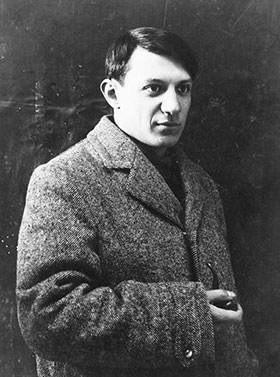- Overview
-
Caravaggio Michelangelo Merisi da Caravaggio 28 September 1571 – 18 July 1610) was an Italian painter active in Rome, Naples, Malta, and Sicily from the early 1590s to 1610. His paintings combine a realistic observation of the human state, both physical and emotional, with a dramatic use of lighting, and they had a formative influence on Baroque painting.
Caravaggio vividly expressed crucial moments and scenes, often featuring violent struggles, torture and death. He worked rapidly, with live models, preferring to forego drawings and work directly onto the canvas. His influence on the new Baroque style that emerged from Mannerism was profound. It can be seen directly or indirectly in the work of Peter Paul Rubens, Jusepe de Ribera, Gian Lorenzo Bernini, and Rembrandt, and artists in the following generation heavily under his influence were called the "Caravaggisti" or "Caravagesques", as well as tenebrists or tenebrosi ("shadowists").
- Career
-
- During 1590s, he made many paintings which had themes pertaining to daily life and were not in tune with the spiritual themes prevalent during that time. His paintings during that period include ‘The Fortune Teller’, ‘The Cardsharps’, ‘Boy with a Fruit Basket’, ‘The Young Bacchus’, and ‘The Music Party’.
- In and around 1595, he created his own paintings and sold them to a trader named Maestro Valentino, and this trader made his paintings come to the notice of Cardinal Francesco del Monte.
- In 1596, he put on canvas the ‘Basket of Fruit’ painting which is distinct and lifelike. With his works ‘Realism’ style of painting took a lead over the ‘Mannerism’ form of painting.
- One of his early realistic paintings which defied spiritual themes was ‘Penitent Magdalene’. This was followed by many paintings, based on the same line, like ‘Martha and Mary Magdalene’, ‘Saint Catherine’, ‘The Taking of Christ’, ‘Saint Francis of Assisi in Ecstasy’, ‘Sacrifice of Isaac’ and ‘Rest on the Flight into Egypt’.
- In 1597, he got the opportunity to decorate the ‘Contarelli Chapel’, which was a turning point in his life and for the Italian style of painting. He made lifelike images of St. Matthew’s life cycle which vividly manifested the realism in his art form.
- Some of his notable paintings from 1601 to 1602 are ‘Crucifixion of St. Peter’, ‘Conversion of Saint Paul on the Road to Damascus’, ‘Conversion on the Way to Damascus’, ‘Supper at Emmaus’, ‘Amor Vincit Omnia’, ‘Saint Matthew and the Angel’, ‘The Inspiration of Saint Matthew’, ‘John the Baptist’, ‘The Incredulity of Saint Thomas’ and ‘The Taking of Christ’.
- This talented artist’s paintings from 1608 till his death comprise of ‘Portrait of Alof de Wignacourt and his Page’, ‘Portrait of Fra Antonio Martelli’, ‘The Beheading of Saint John the Baptist’, ‘Sleeping Cupid’, ‘Annunciation’, ‘Burial of Saint Lucy’, Raising of Lazarus’, ‘Adoration of the Shepherds’, ‘Salome with the Head of John the Baptist’, ‘The Denial of Saint Peter’, ‘Saint Francis in Prayer’, and ‘The Martyrdom of Saint Ursula’.
- During 1590s, he made many paintings which had themes pertaining to daily life and were not in tune with the spiritual themes prevalent during that time. His paintings during that period include ‘The Fortune Teller’, ‘The Cardsharps’, ‘Boy with a Fruit Basket’, ‘The Young Bacchus’, and ‘The Music Party’.
- Legacy
-
Caravaggio's innovations inspired the Baroque, but the Baroque took the drama of his chiaroscuro without the psychological realism. While he directly influenced the style of the artists mentioned above, and, at a distance, the Frenchmen Georges de La Tour and Simon Vouet, and the Spaniard Giuseppe Ribera, within a few decades his works were being ascribed to less scandalous artists, or simply overlooked.
The Baroque, to which he contributed so much, had evolved, and fashions had changed, but perhaps more pertinently Caravaggio never established a workshop as the Carracci did, and thus had no school to spread his techniques. Nor did he ever set out his underlying philosophical approach to art, the psychological realism that may only be deduced from his surviving work.
- On View
-
- The Louvre, Paris
- Museo Nacional Del Prado, Madrid
- Detroit Institute of Arts, Detroit
- Cleveland Museum of Art, Cleveland
- Capitoline Museums, Rome
- Germaldegalerie, Berlin
- National Gallery, London















